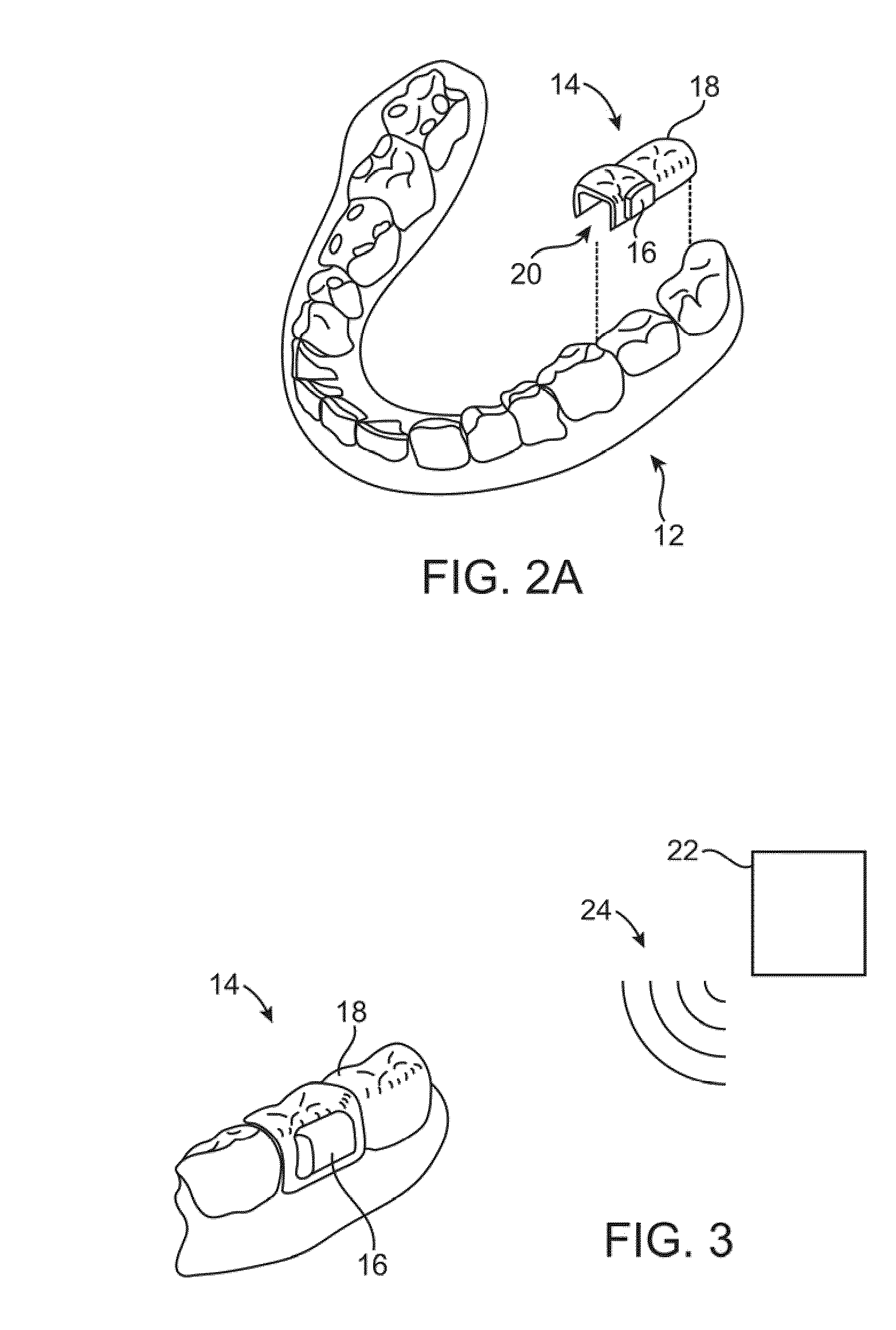Microphone placement for oral applications
a microphone and oral technology, applied in the direction of electrical transducers, electrical transducers, transducer types, etc., can solve the problems of increasing stress levels, adversely affecting the quality of life and psychological well-being of people with hearing impairment, and current products and distribution methods are not able to satisfy or reach over 20 million persons with hearing impairment. , to achieve the effect of reducing sound pressure, reducing noise, and enhancing and/or optimizing conducted vibrations
- Summary
- Abstract
- Description
- Claims
- Application Information
AI Technical Summary
Benefits of technology
Problems solved by technology
Method used
Image
Examples
Embodiment Construction
[0041]An electronic and transducer device may be attached, adhered, or otherwise embedded into or upon a removable oral appliance or other oral device to form a hearing aid assembly. Such an oral appliance may be a custom-made device fabricated from a thermal forming process utilizing a replicate model of a dental structure obtained by conventional dental impression methods. The electronic and transducer assembly may receive incoming sounds either directly or through a receiver to process and amplify the signals and transmit the processed sounds via a vibrating transducer element coupled to a tooth or other bone structure, such as the maxillary, mandibular, or palatine bone structure.
[0042]As shown in FIG. 1, a patient's mouth and dentition 10 is illustrated showing one possible location for removably attaching hearing aid assembly 14 upon or against at least one tooth, such as a molar 12. The patient's tongue TG and palate PL are also illustrated for reference. An electronics and / o...
PUM
 Login to View More
Login to View More Abstract
Description
Claims
Application Information
 Login to View More
Login to View More - R&D
- Intellectual Property
- Life Sciences
- Materials
- Tech Scout
- Unparalleled Data Quality
- Higher Quality Content
- 60% Fewer Hallucinations
Browse by: Latest US Patents, China's latest patents, Technical Efficacy Thesaurus, Application Domain, Technology Topic, Popular Technical Reports.
© 2025 PatSnap. All rights reserved.Legal|Privacy policy|Modern Slavery Act Transparency Statement|Sitemap|About US| Contact US: help@patsnap.com



